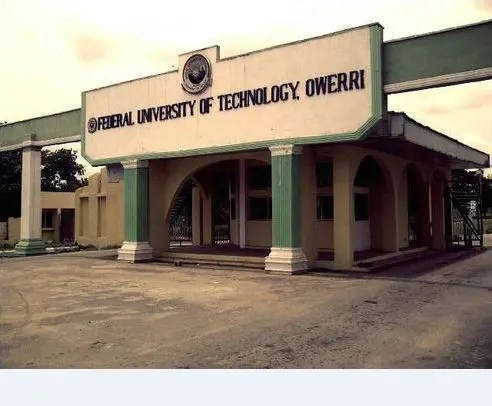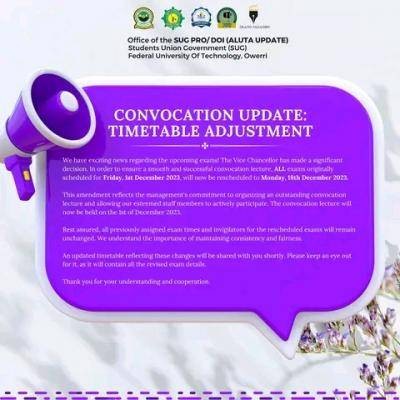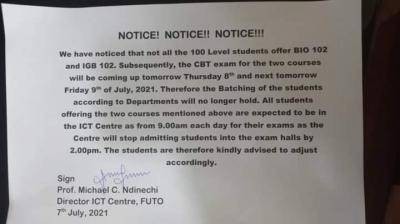
When Professor Chigozie Cyril Asiabaka was named the substantive Vice Chancellor of Federal University of Technology, Owerri, FUTO, it was naturally received with mixed feelings. There were those who rightly or wrongly, did not believe in Asiabaka’s ability to move the institution to greater heights.
On June 20, 2011, Professor Asiabaka presented his inaugural address to the university community at the 17th General Assembly. He carefully captioned his 28-page address “The Quest For Excellence”.
His principal vision was “to reposition FUTO to be a top-ranked first class institution of excellence in technological knowledge production and dissemination, through teaching, research and service to humankind”.
He enunciated short term activities that would be realized in his first six months in office. Professor Asiabaka said he would, as a matter of urgency, commence the beautification of the entire campus, start negotiation for massive infrastructural development, including guest houses, mini-stadium, staff quarters, principal officers’ houses, lecture theatres, workshops and students’ hostels.
The forward looking FUTO Vice Chancellor also planned to harness the Otamiri River for electricity, recreation, agriculture, water supply.
A major challenge to Asiabaka’s administration was the poor infrastructure of the University. While successive administrations have endeavoured to improve the level of infrastructure, the growing population within the University community exposes the urgent need to expand facilities.
Within one year in office, Prof Asiabaka commenced the beautification and landscaping of the University campus, construction of a new building complex for the School of Engineering and Engineering Technology, SEET, which accommodates six departments in the School.
FUTO environment has equally changed with the construction of Engineering and Nuclear Science building, as well as the establishment of a Centre for Excellence in Advanced Material and Manufacturing Technology, under the auspices of the National Agency of Science and Technology Infrastructure, NASENI.
The University is now a proud owner of a National Information Technology Development Centre and Public Procurement Research Centre building, funded through endowment support. Other successes recorded by Asiabaka include installation of solar street lights throughout the campus and installation of a 24 channel DVR closed circuit television facility on campus.
A new Senate Building has been designed to cater for the institution’s expansion and consolidation of administrative and management functions. The same is also true of a Research and Technology Park project, the completion of the Chevron ICT building, establishment of a contemporary Centre for Research and International Development.
Delivering the state of the University address at the 19th General Assembly on July 24, 2012, Asiabaka told an elated university community that a Centre for Nuclear Energy Study and Training, CNEST, construction of the Dental Technology Building,, construction of Optical/Optometry Building have been realized.
Other buildings that stand to Asiabaka’s credit are the School of Environmental Technology Phase B, School of Environmental Technology, SOET and School of Management Technology Building Complex.
Construction work has since commenced on the Centre for Research and Technical Assistance for Youth Development, as well as the construction of FUTO Entrepreneurship Centre. The list appear endless but he is worried that the host communities are badly encroaching on the University land and very fast too.
“ We are aware of the fact that the University has been unable to fully access its full scope of land due to avoidable encroachment by persons in the host communities. Our development projects are therefore being clustered around the limited space so far available to FUTO”, Professor Asiabaka said.
He further lamented that these limitations undermine the development of this University on many fronts and place serious constraints on the administration’s capacity to engage in the type of orderly development that will mutually benefit FUTO and the host communities, based on the provisions in the institution’s master plan.



